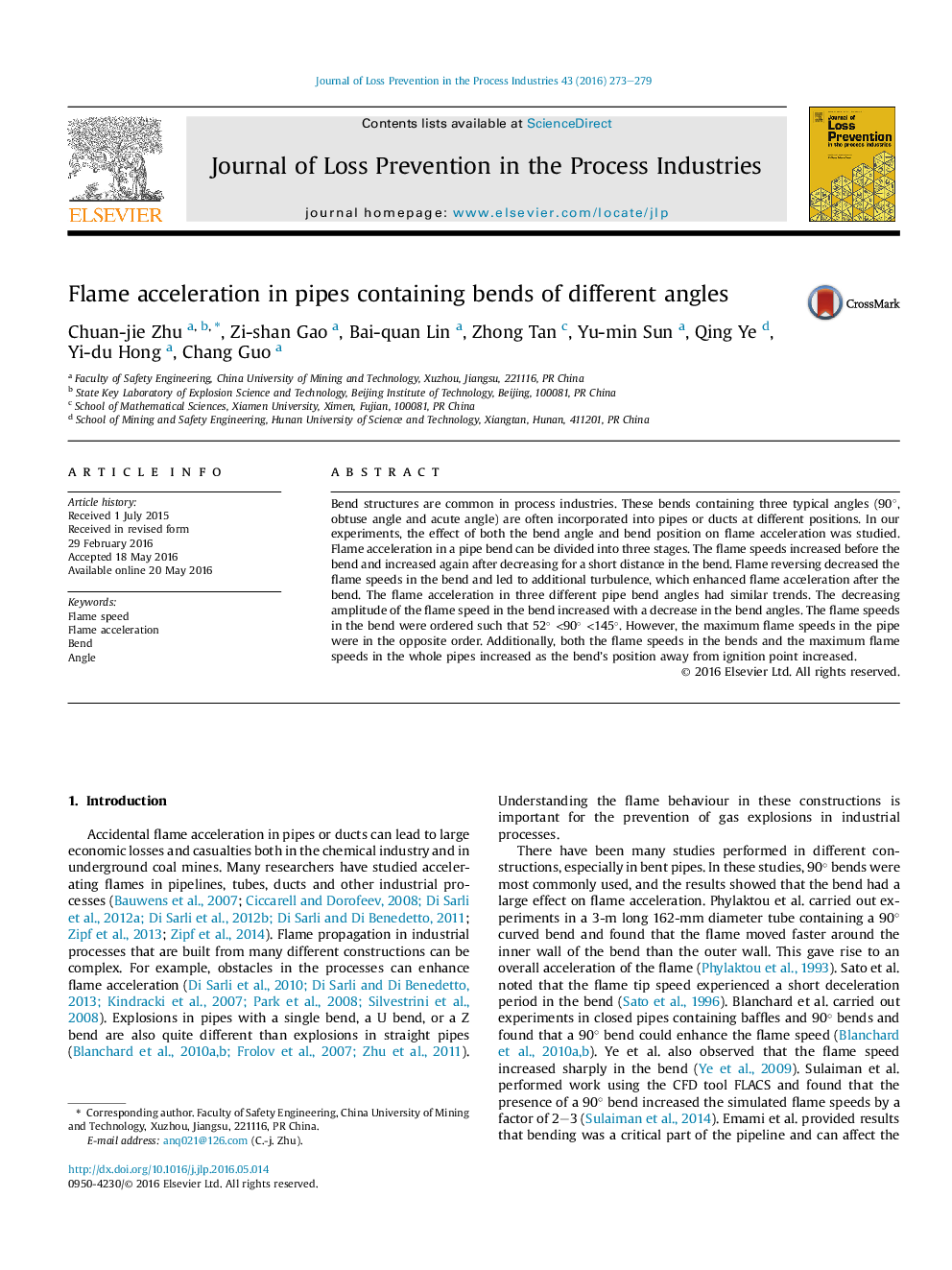| Article ID | Journal | Published Year | Pages | File Type |
|---|---|---|---|---|
| 585932 | Journal of Loss Prevention in the Process Industries | 2016 | 7 Pages |
•Flame acceleration in a bend pipe can be divided into three stages.•Decreasing amplitude of flame speed in the bend increased with the decrease of bend angles.•Flame speeds in the bend were arranged in 52° <90° <145° sequence and the maximum flame speeds were in opposite order.•Both flame speeds in bends and maximum flame speeds in whole pipes increased as bend positions away from ignition point.
Bend structures are common in process industries. These bends containing three typical angles (90°, obtuse angle and acute angle) are often incorporated into pipes or ducts at different positions. In our experiments, the effect of both the bend angle and bend position on flame acceleration was studied. Flame acceleration in a pipe bend can be divided into three stages. The flame speeds increased before the bend and increased again after decreasing for a short distance in the bend. Flame reversing decreased the flame speeds in the bend and led to additional turbulence, which enhanced flame acceleration after the bend. The flame acceleration in three different pipe bend angles had similar trends. The decreasing amplitude of the flame speed in the bend increased with a decrease in the bend angles. The flame speeds in the bend were ordered such that 52° <90° <145°. However, the maximum flame speeds in the pipe were in the opposite order. Additionally, both the flame speeds in the bends and the maximum flame speeds in the whole pipes increased as the bend’s position away from ignition point increased.
